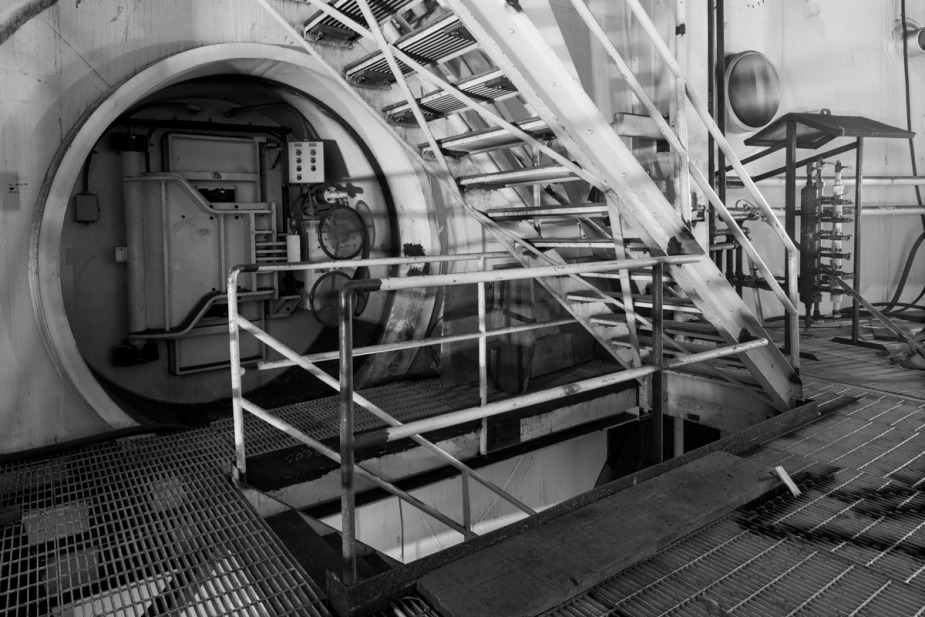Cooling Tower at the inactive Satsop Nuclear Power Plant, now Satsop Business Park, in Washington.
Photo: "Cooling Tower Vertical"
Another angle from inside the beautiful cooling tower at the former Satsop Business Park in Elma, Washington.
Photo: "Satsop From Above"
View of the unfinished Satsop Nuclear Power Plant, now known as the Satsop Business Park, from the top of one of the cooling towers.
Between 1975 - 1978, construction began on this plant, but the heaviest construction occurred in the early 1980's when the facility employed almost 5,000 workers.
By 1982, construction efforts had halted and thousands of workers were laid off. Around 10 years later, all building plans were terminated and staff was reduced to a bare minimum.
Photo: "Curves Against Time"
Inside the cooling tower at the incomplete Satsop Nuclear Power Plant in Washington.
In 1975, preliminary work began on this site. Between 1980-1982, construction efforts were in full swing and the site employed 5,000 workers. A few short years later, construction on the plant was terminated and hundreds of workers lost their jobs.
Photo: "Personnel Entrance"
Personnel entrance to the Nuclear Reactor Buidling at the Satsop Nuclear Power Plant.
Construction on the Satsop Nuclear Plant began in 1977, but was halted five years later due to budget issues. The site was maintained as though construction would resume, but in 1993, the project was cancelled. The plant now sits 76% completed, but has been repurposed by a number of businesses, including NASA.
Nuclear Reactor Building
Had this plant been completed, this building would have housed one pressurized water reactor. The reactor, composed of uranium fuel rods, would have been kept under intense pressure while immersed in water. Water heated inside the reactor core (due to a fission of atoms) is pumped first to a steam generator, then transfered to a secondary system where the water is turned into steam, powering the turbines. Because this system is designed in two separate circuits, there is much less chance of radioactive contamination.
Satsop Nuclear Plant construction began in 1977, but was halted five years later due to budget issues. The site was maintained as though construction would resume a few years later, but in 1993, the project was cancelled. The plant now sits 76% completed, but has been repurposed by a number of businesses, including NASA.
Photo: "Escalante"
Though this west coast nuclear power plant was never completed or fueled, this massive cooling tower was built to completion.
Photo: "The Climb"
It had been raining all day, for the first time in 3 months, when I visited this nuclear power plant in Oregon. As you can imagine, I was pretty disappointed when I found out I was unable to climb the tower that day due to the weather.
I knew the plant would be incredible regardless, but climbing a cooling tower has been at the top of my bucket list for a while.
Guess I'll just have to go back...
Photo: "Cooling Tower"
In 1977, the Washington Public Power Supply System (WPPSS) began construction of two nuclear power plants. It was the largest nuclear power plant project at the time and would contain five nuclear reactors; two 1,250 megawatt pressurized water reactors would be constructed at the Satsop plant.
After the project began, construction costs were nearly tripling the original budget and would end up costing around $24 billion, so in 1982, $3 billion into the project, construction was halted. One reactor was 75% completed; the other 16% done.






